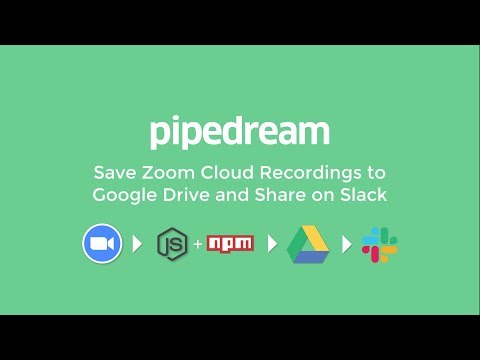What do you want to automate
with Bitbucket and Zoom?
Prompt, edit and deploy AI agents that connect to Bitbucket, Zoom and 3,000+ other apps in seconds.
Trusted by 1,000,000+ developers from startups to Fortune 500 companies
Popular Ways to Connect Bitbucket with Zoom#
Popular Bitbucket and Zoom Triggers#
Emit new event when a new commit is pushed to a branch. See docs here
Emit new event each time a meeting is created where you're the host
Emit new event when a new pull request is created in a repository. See docs here
Emit new event each time a meeting starts where you're the host
Emit new event each time a new recording completes for a meeting or webinar where you're the host
Popular Bitbucket and Zoom Actions#
Overview of Bitbucket#
The BitBucket API taps the potential of BitBucket's Git-based version control system, enabling you to automate workflows around code commits, pull requests, and overall repository management. With this API, you can streamline the collaboration process, enforce coding standards, or integrate with other tools to create a cohesive development ecosystem. Pipedream, as a serverless integration and compute platform, provides a seamless environment to connect BitBucket with various apps and services, enabling you to harness its API for efficient, customized automations.
Connect Bitbucket#
import { axios } from "@pipedream/platform"
export default defineComponent({
props: {
bitbucket: {
type: "app",
app: "bitbucket",
}
},
async run({steps, $}) {
return await axios($, {
url: `https://api.bitbucket.org/2.0/user`,
headers: {
Authorization: `Bearer ${this.bitbucket.$auth.oauth_access_token}`,
},
})
},
})
Overview of Zoom#
The Zoom API lets you tap into a rich set of functionalities to enhance the video conferencing experience within your own app or workflow. With the Zoom API on Pipedream, you can automatically create meetings, manage users, send meeting notifications, and more, orchestrating these actions within a broader automation. This allows for seamless integration with other services, enabling both data collection and action triggers based on Zoom events.
Pipedream workflows allow you to run any Node.js code that connects to the Zoom API. Just create a new workflow, then add prebuilt Zoom actions (create a meeting, send a chat message, etc.) or write your own code. These workflows can be triggered by HTTP requests, timers, email, or on any app-based event (new tweets, a GitHub PR, Zoom events, etc).
Connect Zoom#
import { axios } from "@pipedream/platform"
export default defineComponent({
props: {
zoom: {
type: "app",
app: "zoom",
}
},
async run({steps, $}) {
return await axios($, {
url: `https://api.zoom.us/v2/users/me`,
headers: {
Authorization: `Bearer ${this.zoom.$auth.oauth_access_token}`,
},
})
},
})
Related Videos#
